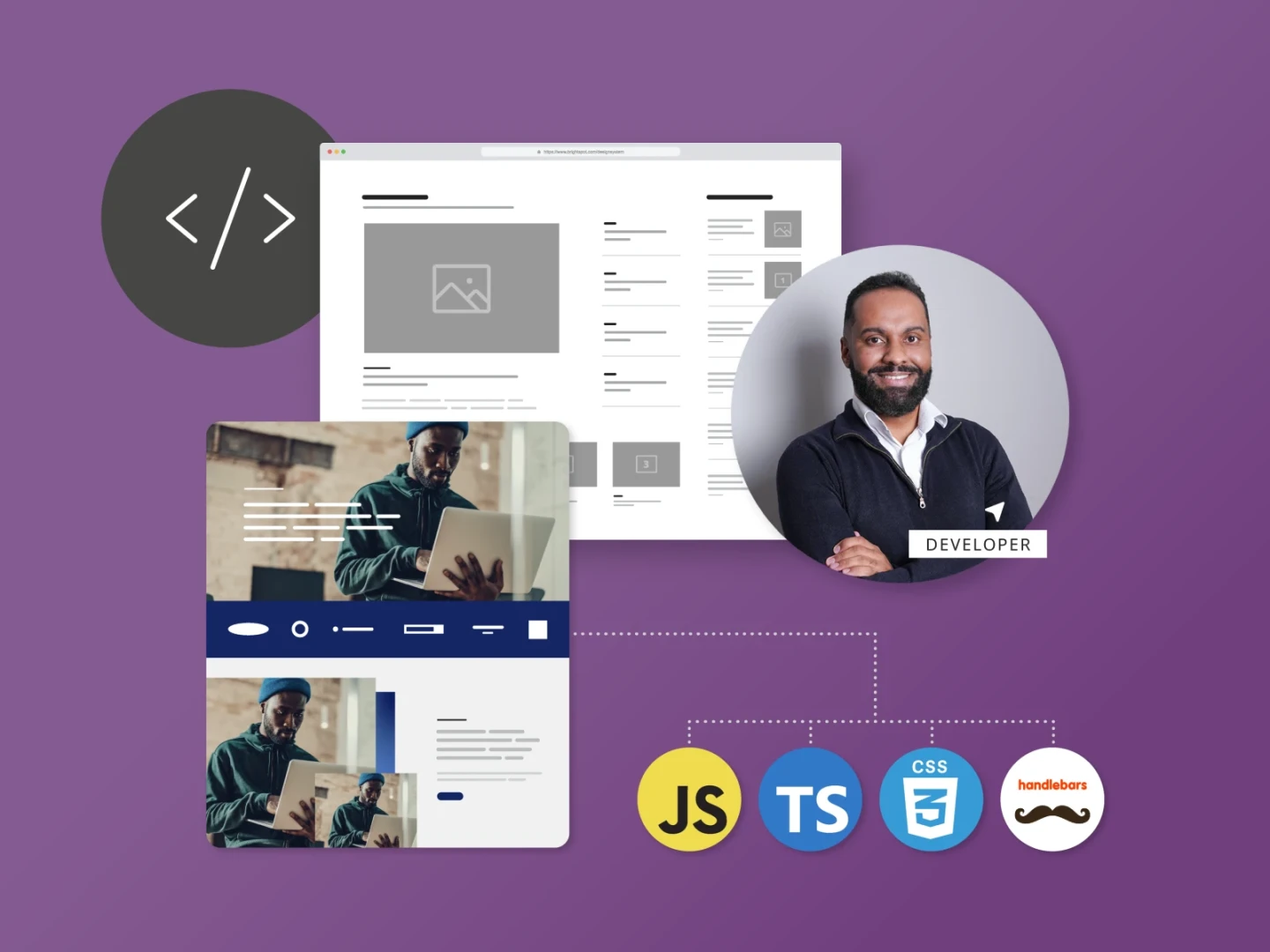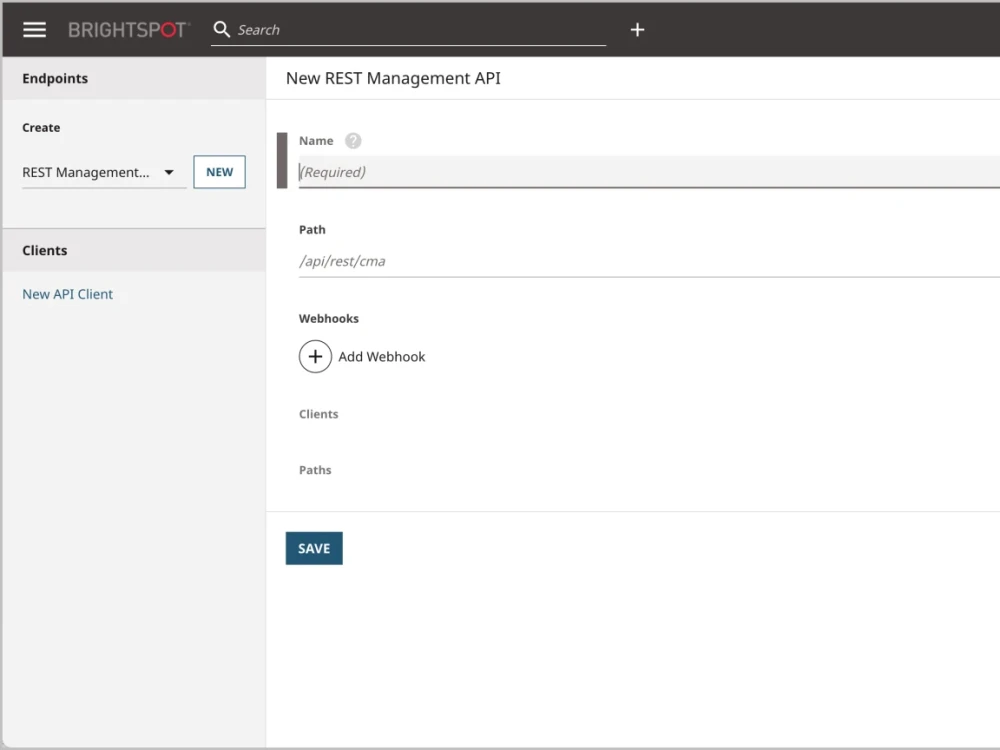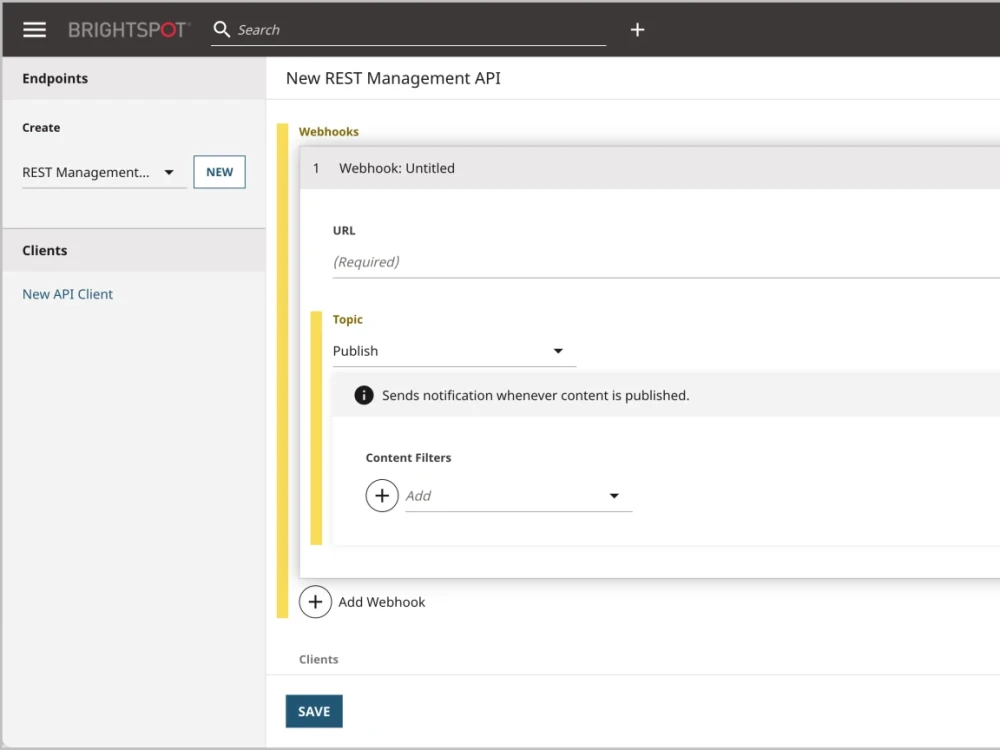Imagine this: your organization has a television at the office that lists articles that your team has published using your content management system (CMS).
Included on the screen are headlines, times of publish, authors, and a number of other data points.
In this situation, there are presumably two systems:
- The CMS used to create and publish the articles and their data
- The app on the television that displays that article data
But how are the two systems able to communicate with one another to achieve the above?
One popular way is webhooks.
What are webhooks?
A term coined and promoted in 2007 by a developer named Jeff Lindsay, a webhook allows different apps to send user-defined callbacks to one another via HTTP POST requests. In plainer English, webhooks allow notifications to be sent from one app to another app when a certain event occurs. The user gets to determine which event triggers the notification, and all notifications are sent in real time.
The fact that these notifications are sent in real time is important.
Using the television/CMS example above, let’s say that you’re an editor-in-chief of a publication at a news organization. It’s on your shoulders to enable your team members to complete their work. As part of this effort, you need to respond to conversations they have within your CMS as quickly as possible, and that means you need to know when comments are made, even if you’re not in the CMS myself.
Without webhooks, you could have the CMS send data about comments every thirty minutes, every three hours, etc. (a process called polling)—but if a time-sensitive comment is made in the CMS, and you don’t know about it right away (and therefore don’t respond to it right away), then you may not be doing your job as effectively as you would like to be.
How do webhooks work?
Webhooks are handy when you don’t have direct access to the system or app from which you are trying to receive data, just like the app running on the television didn’t have access to the article metadata in the CMS.
Webhooks are typically set up by REST APIs, and both the CMS and the app in the example above have one. The app’s REST API does two things:
- It calls the CMS’s REST API and tells it to send metadata over when X event occurs (let’s say when an article is published)
- It provides an endpoint (a URL) to which that metadata should be sent when X event occurs
Once this webhook is established, the app sits tight. All sorts of things go on in the CMS, and eventually, an article gets published. The CMS checks its webhooks when this happens, sees that the app has made one, and then pushes the metadata (the headline, author, time of publish, etc.) over to the URL that the app provided.
Let’s walk this into a real-life example:
Your young child is in daycare. It’s important for you to know when she goes down for a nap so that you can adjust the time she goes to bed. You call the daycare and request that they call you at the number you provide when your daughter starts napping. This action of you calling the daycare and asking that they send you a notification when a specific event happens—that’s you calling the daycare’s REST API, generating the webhook, and providing the endpoint at which the daycare can return the information you requested your phone number).
Next, you go about your workday. At 12:03 p.m., you get a call from the daycare telling you that your daughter has gone down for a nap. You now have the information you needed, you can act on it however you need to, and therefore, you enjoy the value of the webhook you established with the daycare.
It’s important to note that webhook concept creator Jeff Lindsay also evangelized two other use cases for webhooks beyond the notifications discussed above:
- Integration of different web apps (using webhooks to take data from one app, reformat it, and pass along to another app)
- Modification of web apps (using webhooks to allow plugins or other modifications to an app depending on what that app permits)
Brightspot and webhooks
Using Brightspot, you can create webhooks in two ways. The first way is the standard way you create a webhook—through configuring APIs; however, Brightspot also allows webhooks to be easily created via its editorial UI.
In the image above, you are able to simply navigate to a section within Brightspot CMS, select REST Management API from a dropdown list, and then see an interface with all necessary elements laid cleanly out for you.
After entering a name for the API and defining the API’s URL (not the same as the webhook’s URL—a conversation for another day), you can click “Add Webhook,” which pops open a content edit form where you can define the URL to which metadata is sent as well as what event triggers the webhook.
Topics are the events discussed above. Many of these come out-of-the-box with Brightspot: Publish, Conversation, Translation, Workflow—and quite a few more than those. Depending on which topic you choose to “listen” to, the UI morphs to add deeper configuration functionality.
From those examples alone, outside apps can receive notifications when something is published, when a comment is made in the conversation widget, when a translation has transitioned to any number of states, or when an asset progresses through a workflow.
All of this is highly actionable information for an editor.
Content filters allow you to dig down with even greater granularity as to which specific event triggers a notification. Maybe you only want the webhook for a particular site in your multisite environment, or maybe only for the notification to trigger the first time a specific event occurs.
All possible.
As software-as-a-service platforms continue to enjoy widespread popularity across the internet, webhooks remain a valuable way to get these platforms to communicate, and more importantly, ensure the users of these platforms are well aware of relevant changes the moment they are made. And with Brightspot, the world-class platform to boost your digital strategy, you get the tools to make webhooks however you prefer to do so.
Webhooks allow different apps to send user-defined callbacks to one another via HTTP POST requests. In plainer English, webhooks allow notifications to be sent from one app to another app when a certain event occurs. The user gets to determine which event triggers the notification, and all notifications are sent in real time.
A webhook is basically a call between two services that is triggered by an event in one system that then needs to be reported by another. When a defined event is triggered, the system in which it occurred sends data to the URL provided by the receiving system by way of an HTTP request.
Though there are very specific and technical nuances, you can typically think of an API (application programming interface) as something that facilitates a two-way connection between applications—say, a CMS and third-party analytics tool—to accomplish any number of tasks: fetching data, pushing data, and the list goes on.
A webhook is an API pattern; therefore, it becomes difficult to compare and contrast the two in a traditional way. For practical purposes, consider a webhook as a simple API that pushes data from one system to another without serving any other function.
Webhooks are used to send information in real time between different web applications. Use cases for webhooks run the gamut from publishing alerts for internal teams to a home-grown service to alert members of a social group when a new event is added to a shared calendar.
Here are some examples of different ways a webhook can be used:
- A digital publisher needs to be notified the moment an article is ready to be approved for publication on the website thought the company’s CMS. A webhook will send an SMS alert to her phone to let her know the article is ready for final approval.
- An eCommerce business needs to know when a new order has been received and to alert the necessary team members that this item is ready for fulfillment. A webhook can trigger an email notification to all the necessary team members as well as update the relevant workflows in the system.
- A restaurant owner wants to know whenever a new customer review is received that is lower than two stars. A webhook can alert the owner via text that the negative review has been received and he can respond accordingly.
- An accounts-receivable team wants to know when a vendor has submitted a new invoice through the company’s shared invoicing email address. A webhook can update the appropriate accounts database with the vendor’s invoicing details to ensure speedy processing of the invoice as well as consistent financial documentation.








